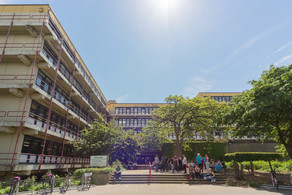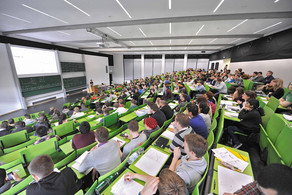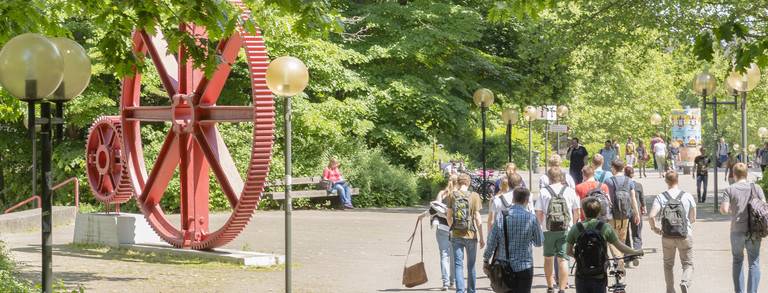Equipment of the working group
The chair has access to the common facilities of the CCB department, which ensures the basic supply of chemicals and gases and provides various analytical methods (NMR spectroscopy, elementary analysis, mass spectrometry, chromatography). We also use the LIDO3 cluster of the ITMC for quantum chemical studies with the programs ORCA, Gaussian and Turbomole. For the special experimental research typical work of our group the following infrastructure is available in our own laboratories.
Synthesis
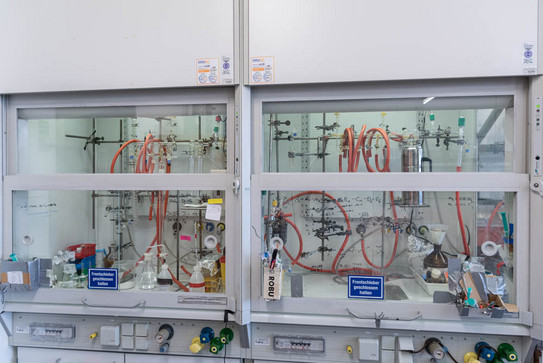
For working under inert gas (argon/nitrogen) for preparation and for reaction studies of O2- or H2O-sensitive substances, our fume cupboards are equipped with modern Schlenck lines. Furthermore, several glove boxes are available (see below).
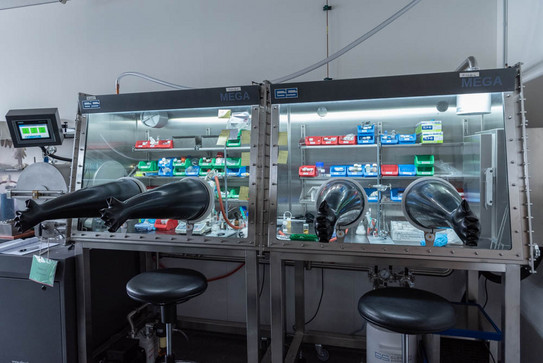
Glovebox system technology of the type MEGA E-Line
Inert gas complete systems with a total of 5 workstations, equipped with refrigerators / freezers
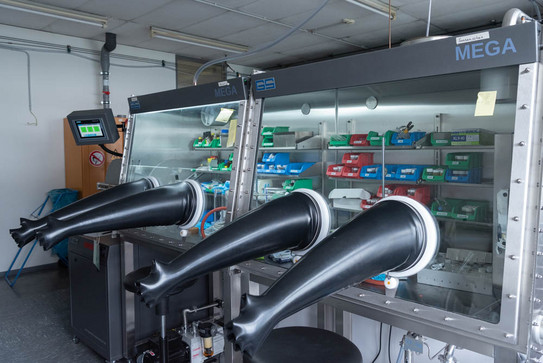
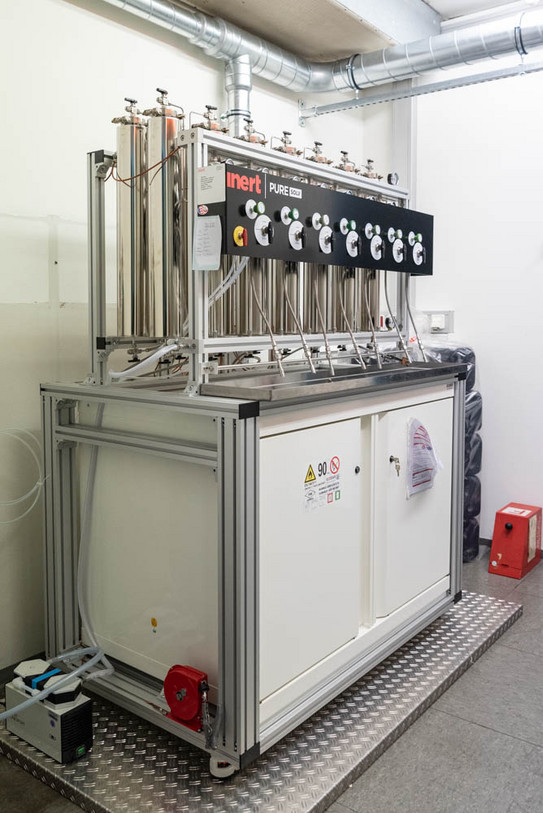
PureSolv MD 7 from Inert Systems
Drying system for the following solvents for synthesis and photophysical analysis of H2O-sensitive substances: Tetrahydrofuran, diethyl ether, toluene, dichloromethane, acetonitrile, n-pentane, cyclohexane
Other typical laboratory work techniques, such as spherical tube distillation, sublimation apparatus, high vacuum distillation and UV reactor are also available.
Analytics
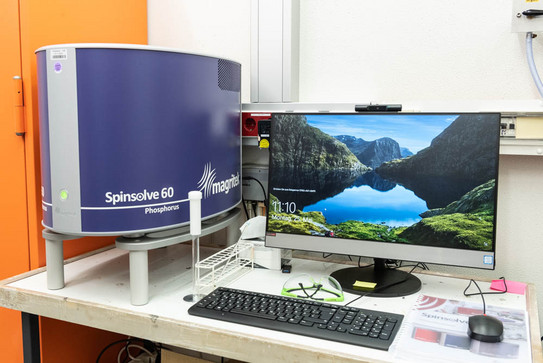
Magritek SPINSOLVE PHOSPHORUS 60 MHz ULTRA (1H, 19F and 31P) Benchtop NMR
The 3-nucleus NMR spectrometer is used for reaction control as well as kinetic investigation of catalytic conversions by means of a continuous flow cell and is also used for AC laboratory practicals.
(Rigaku)-Oxford Diffraction: Xcalibur with Sapphire CCD detector
For single crystal diffractometry for 3-dimensional structure elucidation and investigation of inter- and intramolecular interactions, there is access to the aforementioned diffractometer of the AC's teaching department.
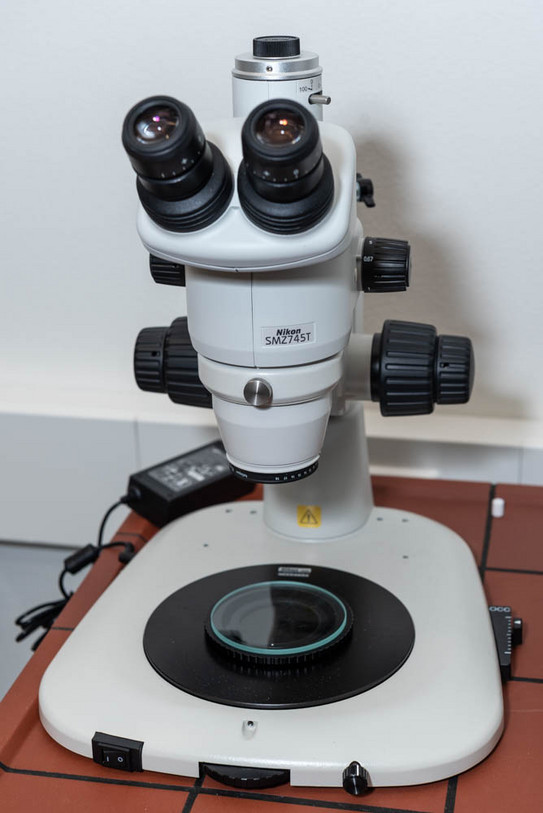
Nikon SMZ-745T mikroscope
Determination of melting point
Cyclovoltammetry and spectroelectrochemistry
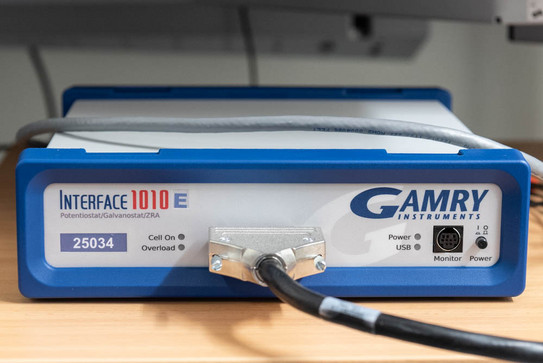
Gamry 1010E Potentiostat / Galvanostat/ZRA
The potentiostate is used for precise impedance measurements and is operated with a (5 mL) voltammetric cell with a receptacle for three electrodes: GC (Glossy Carbon) electrode, platinum electrode and an Ag/Ag+ non-aqueous reference electrode. The tests can be performed for O2- and H2O-sensitive substances in an analytical glovebox.
In combination with our Agilent Cary 5000 (see below), spectroelectrochemical reflection experiments can be performed with the Gamry 1010E in a SEC-C spectroelectrochemical cell (platinum mesh as optically transparent working electrode and an Ag/Ag+ non-aqueous reference electrode).
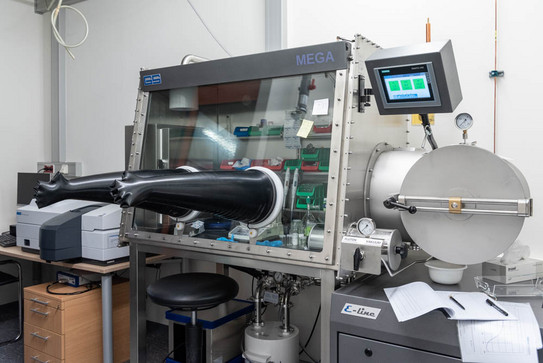
UV/Vis absorption spectroscopy
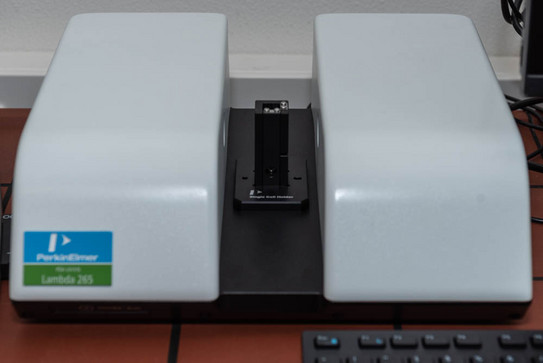
Perkin-Elmer LAMBDA 265 UV/Vis spectrophotometer
For ultrafast measurement of absorption spectra for reaction control and extinction coefficient determination.
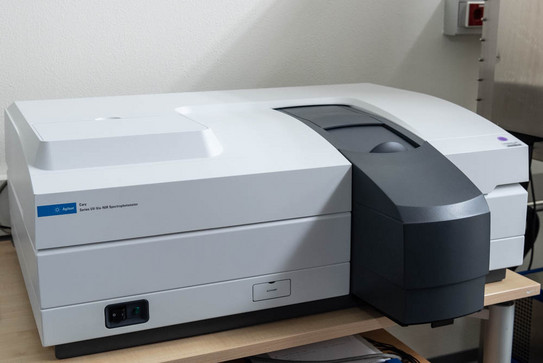
Agilent Cary 5000 double beam UV-vis-NIR spectrometer (175-3300 nm)
In addition to a sample chamber for solution samples, this high-performance absorption spectrometer is also equipped with a screwable inert sample chamber for solids (Praying Mantis) and thus allows investigations depending on the state of aggregation including polymer films even on sensitive compounds. The extremely high resolution of the spectrometer also allows the detection of formal spin-forbidden transitions and is helpful in spectroelectrochemistry in combination with the Gamry 1010E potentiostat (see above).
Photoluminescence spectroscopy
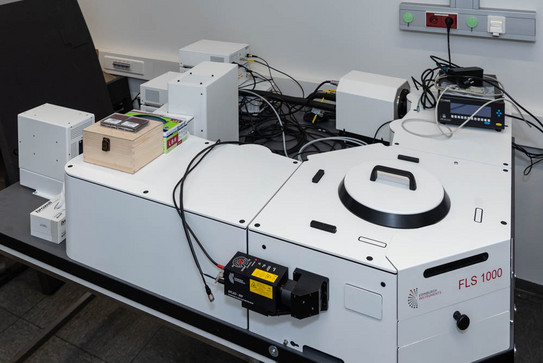
Edinburgh Instruments FLS 1000
- Double monochromators in the excitation and emission path
- Light sources: 450 W xenon lamp (steady state), µF2 xenon flashlight, various VPLEDs and EPLEDs (lifetime measurements)
- Red-sensitive detector (PMT-980, 200-870 nm) and N2.l-cooled NIR detector (PMT-1400, 300-1400 nm)
- Polarizers in the excitation and emission path (for anisotropy measurements)
- Integrating sphere (determination of QY at room temperature)
- Cryosphere (determination of the QY in the range 77-500 K)
- 77 K Cryostat (Oxford Instruments OptistatDN)
- 4 K Cryostat (Advanced Research Systems)
- CPL module (Circular polarized luminescence)

